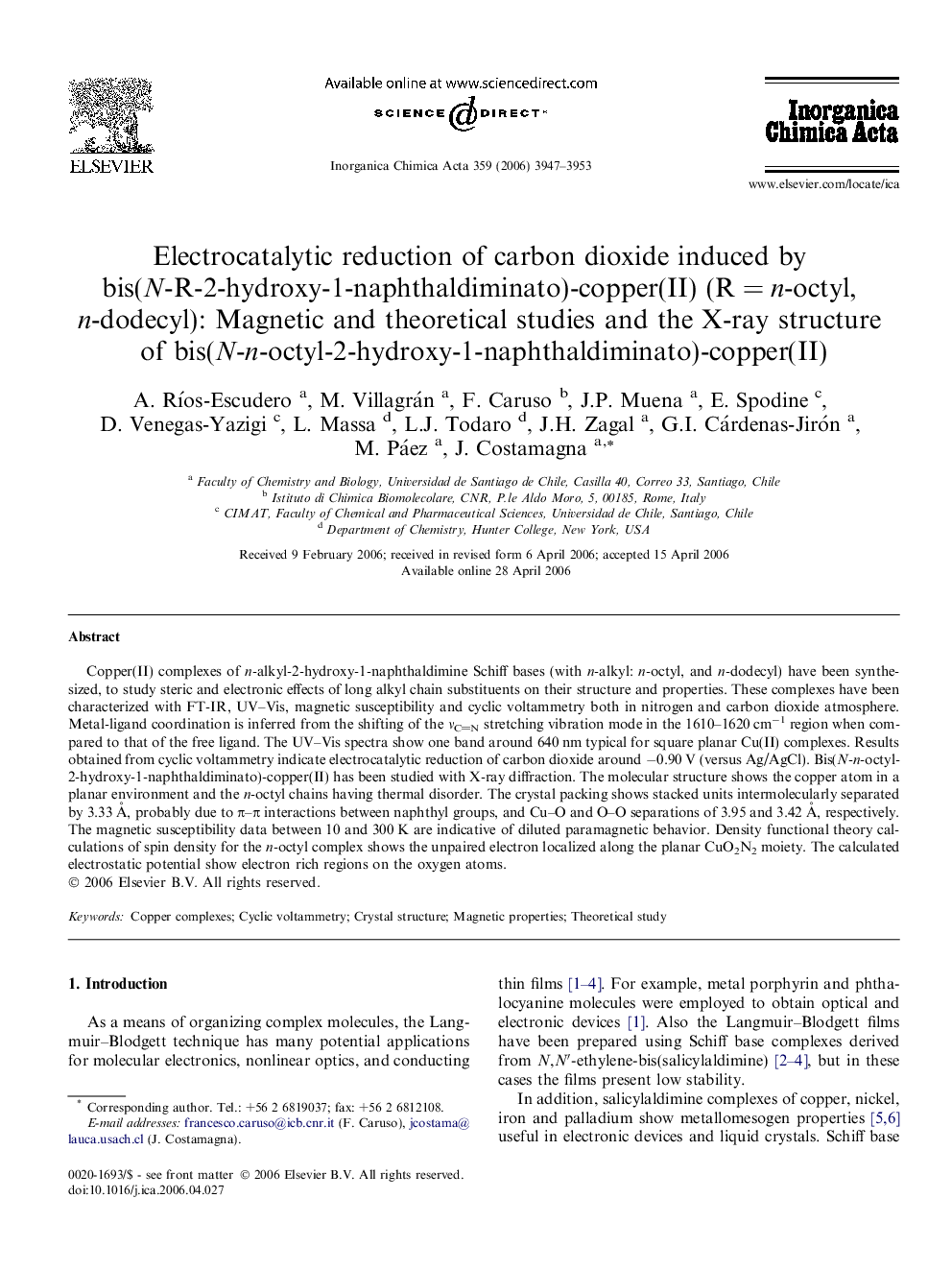| کد مقاله | کد نشریه | سال انتشار | مقاله انگلیسی | نسخه تمام متن |
|---|---|---|---|---|
| 1312912 | 975512 | 2006 | 7 صفحه PDF | دانلود رایگان |

Copper(II) complexes of n-alkyl-2-hydroxy-1-naphthaldimine Schiff bases (with n-alkyl: n-octyl, and n-dodecyl) have been synthesized, to study steric and electronic effects of long alkyl chain substituents on their structure and properties. These complexes have been characterized with FT-IR, UV–Vis, magnetic susceptibility and cyclic voltammetry both in nitrogen and carbon dioxide atmosphere. Metal-ligand coordination is inferred from the shifting of the νCN stretching vibration mode in the 1610–1620 cm−1 region when compared to that of the free ligand. The UV–Vis spectra show one band around 640 nm typical for square planar Cu(II) complexes. Results obtained from cyclic voltammetry indicate electrocatalytic reduction of carbon dioxide around −0.90 V (versus Ag/AgCl). Bis(N-n-octyl-2-hydroxy-1-naphthaldiminato)-copper(II) has been studied with X-ray diffraction. The molecular structure shows the copper atom in a planar environment and the n-octyl chains having thermal disorder. The crystal packing shows stacked units intermolecularly separated by 3.33 Å, probably due to π–π interactions between naphthyl groups, and Cu–O and O–O separations of 3.95 and 3.42 Å, respectively. The magnetic susceptibility data between 10 and 300 K are indicative of diluted paramagnetic behavior. Density functional theory calculations of spin density for the n-octyl complex shows the unpaired electron localized along the planar CuO2N2 moiety. The calculated electrostatic potential show electron rich regions on the oxygen atoms.
Bis(N-R-2-hydroxy-1-naphthaldiminato)-copper(II) complexes, R = n-octyl, n-dodecyl, have been synthesized and studied to analyze the influence of the chain length on their properties. Cyclic voltammetry shows carbon dioxide reduction and magnetic properties and theoretical calculations are also included. The X-ray structure of the n-octyl derivative shows planarity of the Cu coordination sphere and stacked units.Figure optionsDownload as PowerPoint slide
Journal: Inorganica Chimica Acta - Volume 359, Issue 12, 1 September 2006, Pages 3947–3953